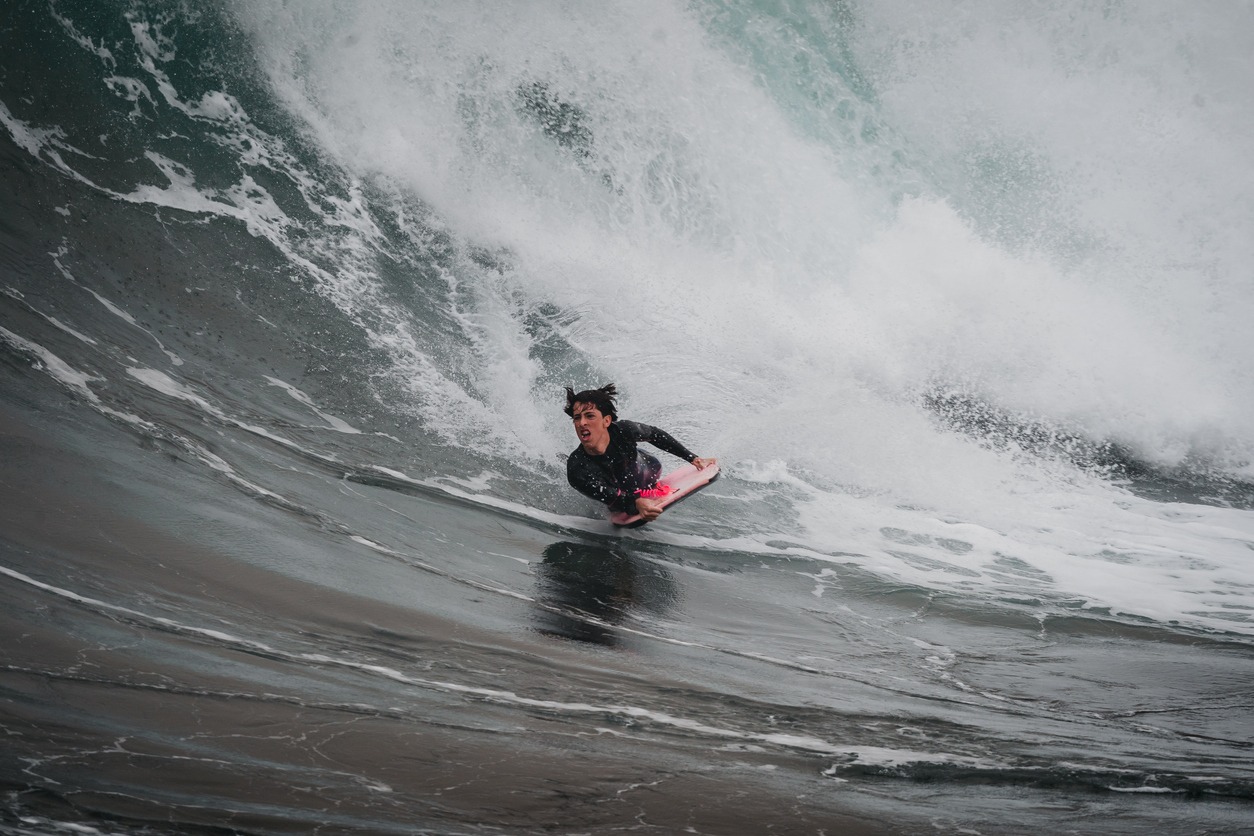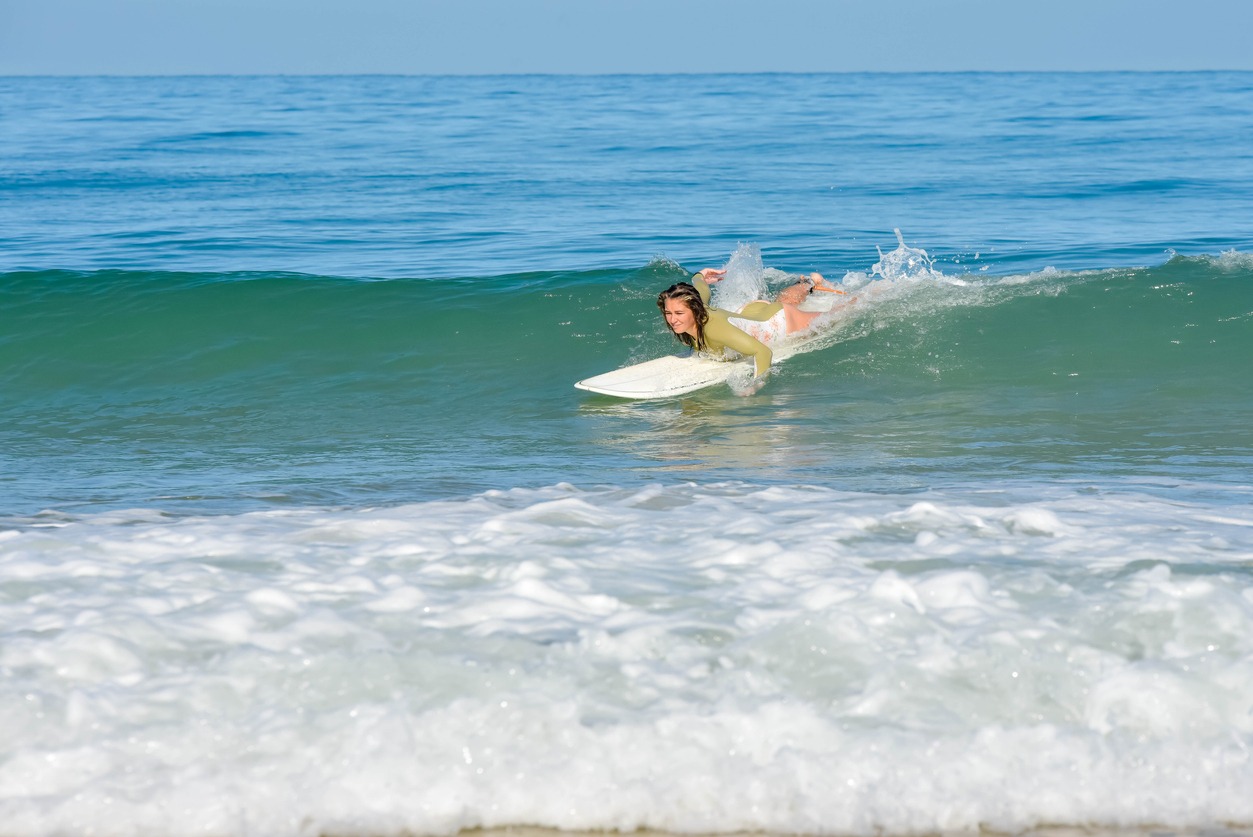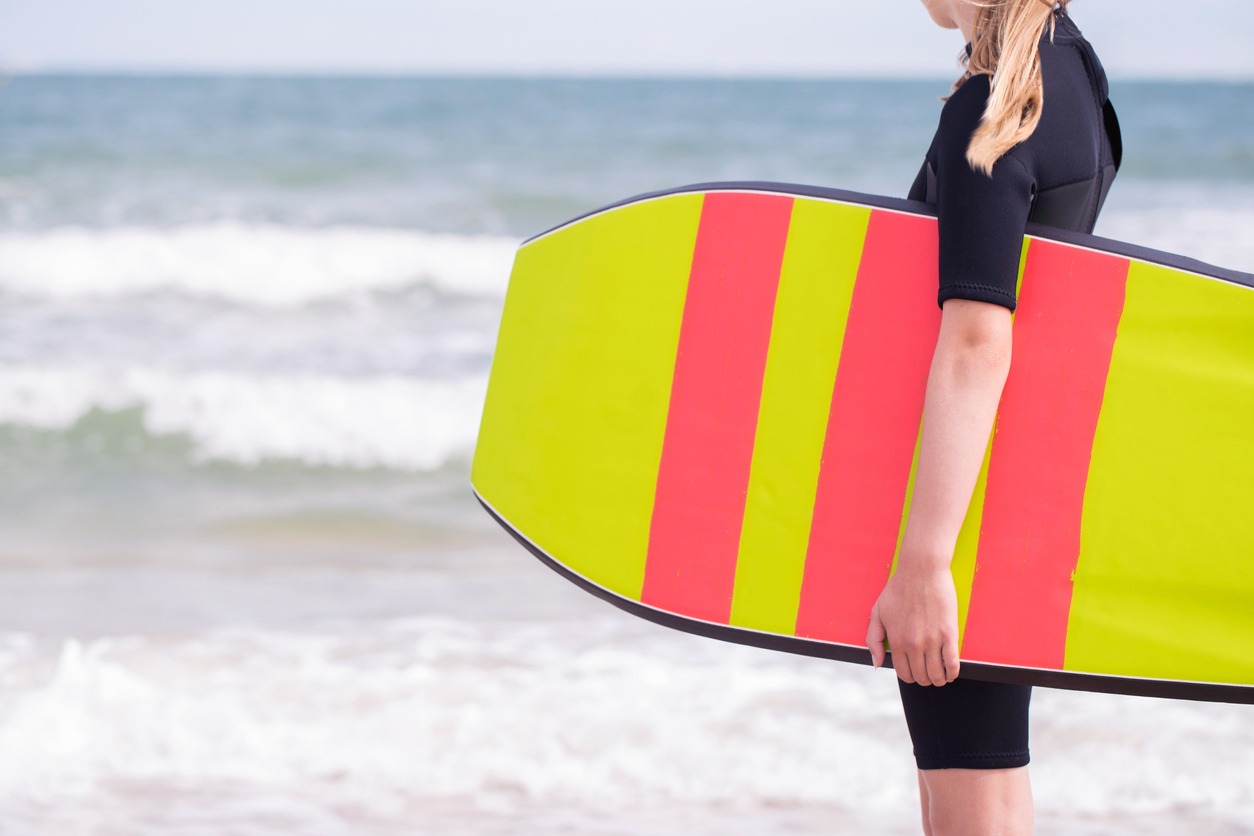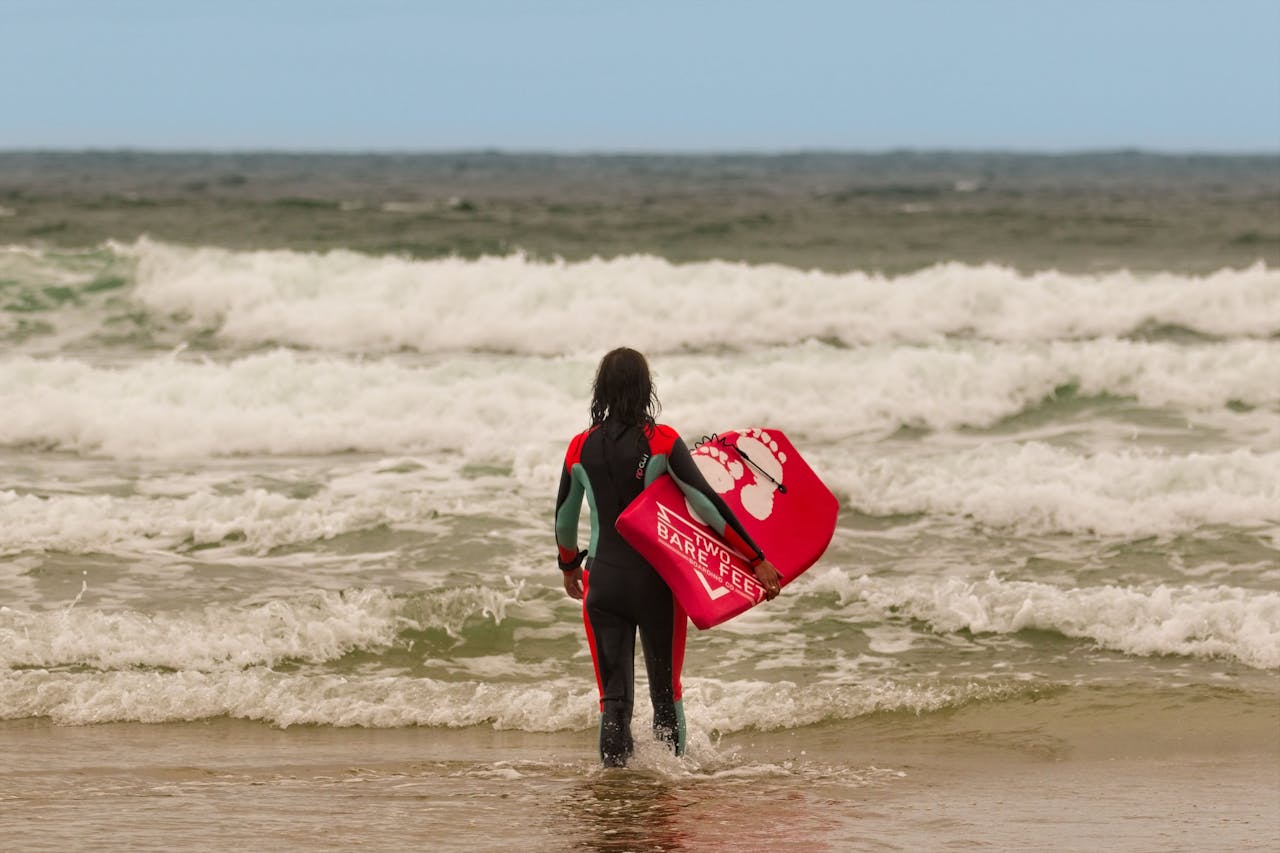Choosing the Right Bodyboard Size for Adults: A Complete Guide
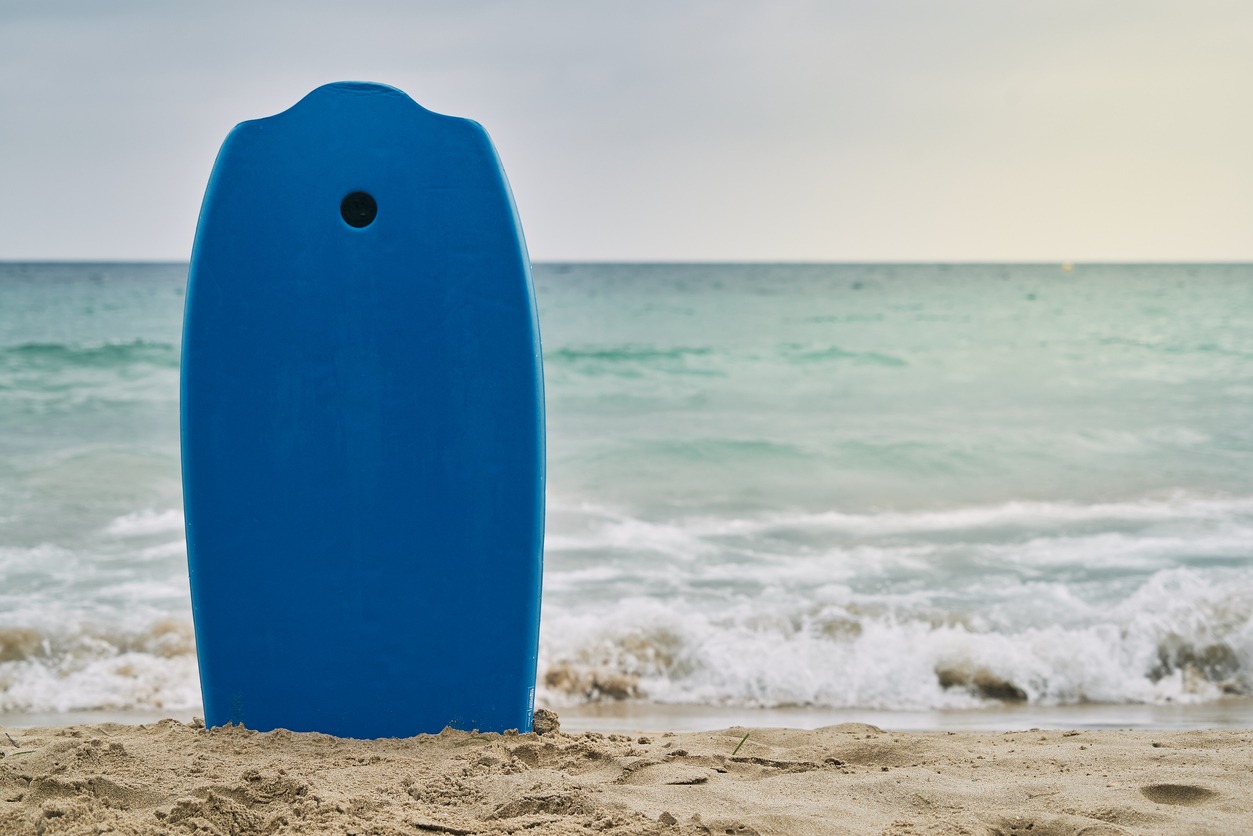
When choosing a bodyboard as an adult, consider your height, weight, and skill level. Generally, taller riders need longer boards for proper weight distribution. Your board's core material affects performance, with PE offering a balance of flexibility and projection. Tail shape influences maneuverability, while width and thickness impact buoyancy and responsiveness. Match your board to wave conditions and riding style. Beginners should opt for longer, stable boards, while experienced riders can go shorter for increased control. Don't forget to factor in your weight when selecting board size and volume. There's much more to investigate in finding your perfect bodyboard fit.
Understanding Bodyboard Sizing Basics
When it comes to choosing the right bodyboard, size matters more than you might think. The primary factor in determining bodyboard size is your height, with lengths typically ranging from 32 to 46 inches. However, your weight also plays a pivotal role, as it affects the board's required buoyancy and volume. Longer boards provide more stability and buoyancy in small waves, while shorter boards offer more agility and control in large waves.
To simplify the selection process, you can refer to a bodyboard size chart that offers general guidelines based on height and weight. These charts provide a solid starting point, but remember that you may need to adjust the length by 1-2 inches to account for your unique body type and preferences.
While a quick chin-to-knee measurement can give you a rough estimate of the appropriate bodyboard length, using a size chart is more accurate. Keep in mind that other factors, such as water temperatures and types of waves you'll be riding, can influence your choice. Additionally, consider the core materials and slick materials used in the board's construction, as they can affect performance in different conditions.
Height and Weight Considerations
Your height and weight are essential factors in selecting the right bodyboard size. As a general rule, taller individuals require longer boards to ensure proper weight distribution and optimal riding performance in the water. However, your weight also plays a pivotal role in determining the ideal board length and volume. When choosing a proper-sized bodyboard for children, it's important to contemplate the child's height and weight to guarantee the board is not too large or too small. Bodyboards typically range from 32 to 46 inches in length, catering to various body types and sizes. To find your ideal size, locate your height and weight on the chart and identify the corresponding board length. Keep in mind that this is a general guideline, and you may need to make minor adjustments based on your individual body type and riding preferences.
Core Materials and Performance
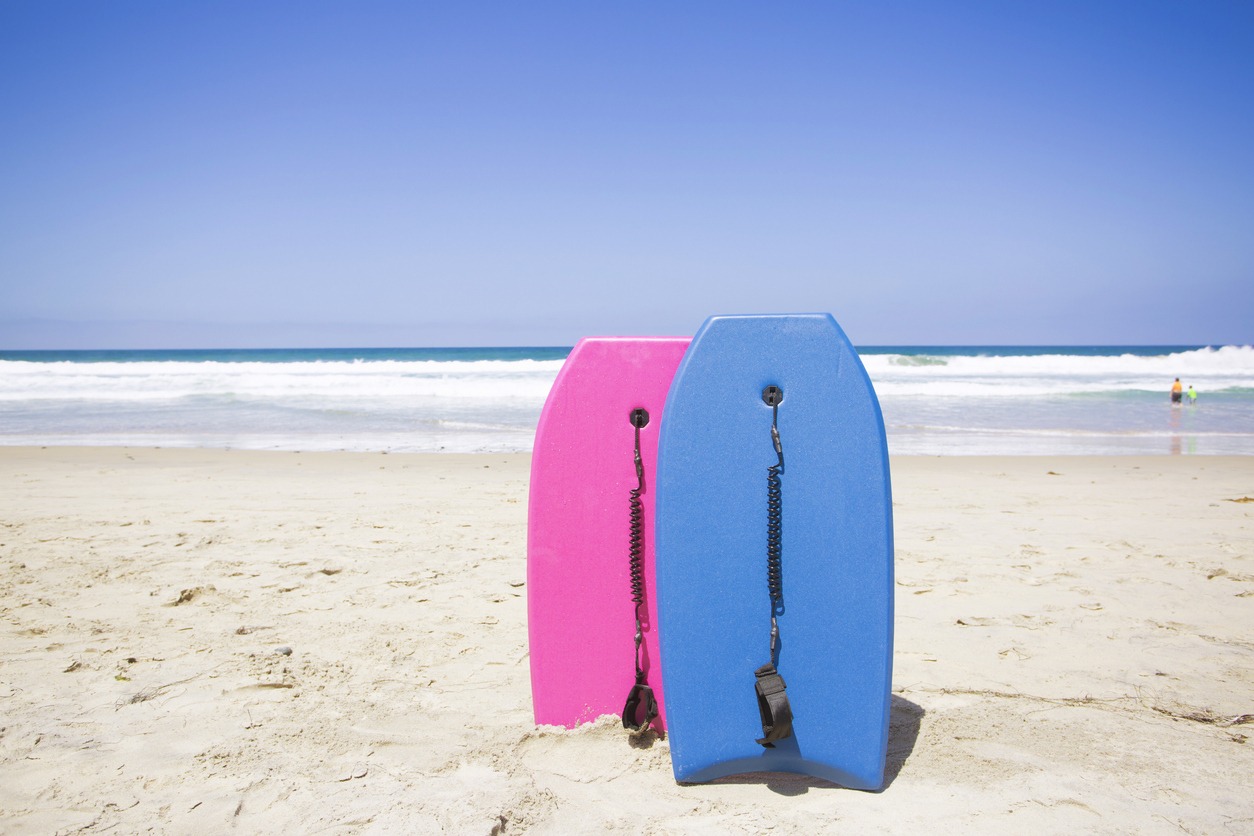
While size considerations are pivotal, the core material of your bodyboard plays a vital role in its performance and suitability for your needs. Three main core types dominate the market: Dow polyethylene (PE), polypropylene (PP), and extruded polystyrene (EPS).
PE cores, often made from HDPE (High density polyethylene), offer a balance of flexibility and projection, making them versatile for various wave conditions. If you're looking for a lightweight option with increased rigidity, PP cores might be your best bet. For beginners or those on a budget, EPS cores provide a simple and cost-effective solution.
The core material substantially impacts your board's overall performance. Heavier riders should opt for stronger, stiffer cores to handle their weight and power. Additionally, stringers running lengthwise through the bodyboard enhance strength, flex, and memory, improving the board's responsiveness.
When selecting your bodyboard, consider your size, skill level, and the wave conditions you'll encounter. The right core type will guarantee ideal performance and durability. Remember, polyethylene foam cores offer flexibility, PP cores provide lightness and stiffness, while EPS cores are budget-friendly. Choose wisely to maximize your bodyboarding experience.
Tail Shapes and Maneuverability
The tail shape of your bodyboard is an essential factor in determining its maneuverability and overall performance in the water. When choosing the right bodyboard, you'll need to ponder how different tail shapes affect your riding style and the types of waves you'll encounter.
Crescent tails are ideal if you're looking for smooth turns and predictable tracking on the wave. They're great for beginners or those who prefer a more controlled ride. If you're after aggressive maneuverability and a spinny feel, bat tails might be your best bet. These are perfect for more experienced riders who want to perform tricks and quick turns.
Delta tails offer a balanced performance, making them a versatile option for various riding styles and wave conditions. If you're unsure about your preferred style or encounter different types of waves, this could be an excellent choice. For those tackling bigger, more powerful waves, hubb tails prioritize stability and control, giving you the confidence to take on challenging conditions.
Board Width and Thickness
Having considered tail shapes, it's time to focus on board width and thickness, two key factors that significantly influence your bodyboarding experience. When choosing the right size board, you'll need to take into account your weight and the type of wave riding you plan to do.
Board width affects buoyancy and maneuverability. Wider boards offer more flotation, making them ideal for larger riders or cold water conditions where additional buoyancy is needed. However, they can be harder to turn. Narrower boards provide greater maneuverability but may not offer enough support for heavier bodyboarders.
Thickness is essential for board performance. Slimmer models, typically around 51mm, offer improved responsiveness and high-performance capabilities. They're great for experienced riders seeking agility in challenging waves. Thicker boards provide more stability and flotation, suitable for beginners or larger riders.
The ideal width and thickness depend on your weight, preferred wave conditions, and riding style. Versatile all-around dimensions work well for most applications. When selecting your board, consider the bottom of the board and bodyboard cores, as these elements also impact performance. Remember to balance stability, flotation, and maneuverability to match your needs and surfing environment.
Wave Conditions and Board Selection
Understanding wave conditions is essential when selecting the right bodyboard. When choosing a bodyboard, you'll need to ponder the type of waves you'll be riding and your riding style. For smaller, less aggressive waves, opt for a thicker, longer bodyboard. This increased surface area provides better flotation and feel, making it easier to catch and ride waves.
On the other hand, if you're tackling larger, more powerful waves, you'll want a thinner, shorter bodyboard. These boards offer improved maneuverability and control, allowing you to navigate through more challenging conditions. The reduced length and thickness enhance responsiveness and agility, which is pivotal when riding bigger waves.
Match your bodyboard's characteristics to the specific wave conditions you'll encounter, consider your bodyboarding experience level when choosing a board, and pay attention to the lower wide point of the board for optimal performance.
If you're a beginner, it's generally recommended to start with a larger bodyboard. This will provide you with more stability and comfort as you gain experience in various wave types. As you progress and develop your skills, you can move to smaller, more responsive boards that suit your preferred riding style and the wave conditions you frequently face.
Experience Level and Board Choice
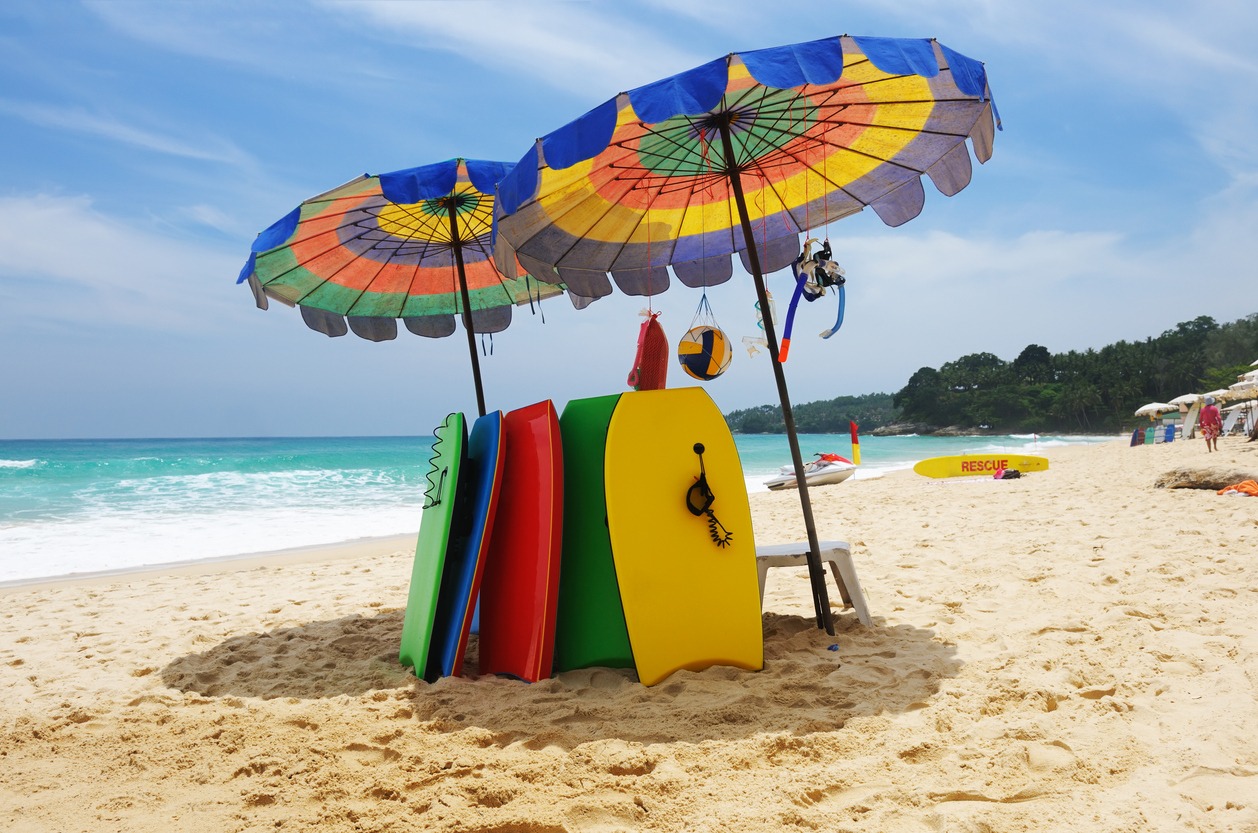
When selecting a bodyboard, your experience level plays a crucial role in determining the right size and style. As a general rule of thumb, beginners should opt for longer, more stable boards to build confidence and control in the water. If you're a first-time rider, these boards are great for learning the basics and mastering your positioning.
As you progress to an intermediate level, you'll want to transition to shorter, more maneuverable boards. These will allow you to perform more advanced maneuvers and tackle bigger waves. Make sure to honestly assess your skills before making the switch.
Advanced riders need specialized features and materials to optimize performance in challenging conditions. Use our bodyboard size guide to find the perfect match for your rider needs. Remember, the right board should return to its original shape quickly after flexing, especially in warm water.
To choose the best board, gain experience riding different wave types and conditions. This will help you understand how various boards perform and inform your selection. As you improve, you'll find that your preferences may change, so don't be afraid to experiment with different sizes and styles.
Testing and Renting Options
Savvy bodyboarders know that testing before buying is key to finding the perfect board. When you're ready to buy your first bodyboard or upgrade your current one, take advantage of the various testing and renting options available. Many stores offer demo programs that allow you to try different types of boards before making a purchase. This hands-on experience is essential in the bodyboard world, as it helps you understand important factors like size, shape, and material.
Renting a bodyboard for a day or week is another excellent way to determine the ideal size and features for your needs. By trying out a variety of shapes and lengths at the beach, you'll get a real feel for what works best for you. Online retailers often provide liberal return policies, enabling you to find the perfect board through trial and error.
- Allows you to experience different types of boards firsthand
- Helps you make an informed decision on high-quality products
- Guarantees you choose a board that will last a long time
Don't hesitate to seek advice from experienced staff at specialty shops. They can provide helpful guidance on selecting the appropriate bodyboard size based on your height, weight, and ability level.
Advanced Features for Seasoned Riders
Seasoned bodyboarders demand more from their equipment. As you progress in the sport, you'll likely find yourself seeking advanced features that enhance performance in challenging conditions. High-end bodyboards incorporate advanced core materials like extruded polystyrene (EPS), offering ideal stiffness, flex, and weight for improved control and maneuverability.
Pro-level models feature specialized tail shapes, such as the Hubb design, bat tail, or crescent tail, which provide enhanced stability and control in bigger waves. You'll also find premium boards equipped with dual or triple stringer systems, improving torsional rigidity and projection for more powerful rides.
Experienced riders often prefer thinner, narrower board profiles around 51mm for increased maneuverability and precision. These boards cater to both prone (laying) and drop-knee riding styles, allowing for versatility in your approach.
High-end bodyboard brands employ proprietary construction techniques and premium components to deliver competitive-level performance. When choosing a board with advanced features, consider your riding style, wave conditions, and personal preferences. Remember that these specialized designs may require a period of adjustment, but they can drastically enhance your bodyboarding experience once you've become adept with them.

